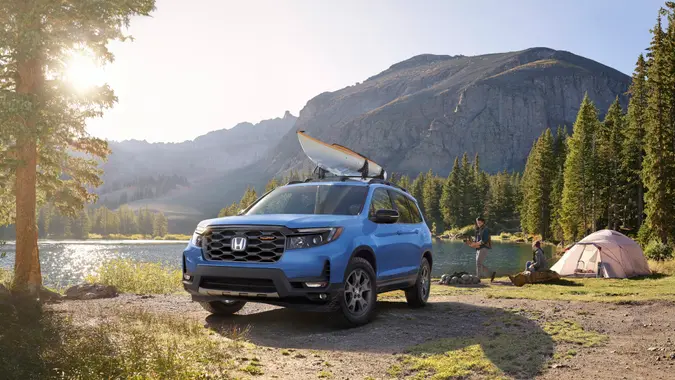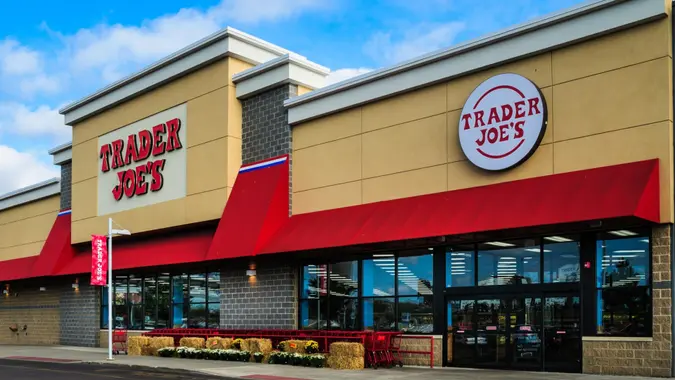I’m a Financial Advisor: This Is the Worst Possible Way To Pay For Groceries

Commitment to Our Readers
GOBankingRates' editorial team is committed to bringing you unbiased reviews and information. We use data-driven methodologies to evaluate financial products and services - our reviews and ratings are not influenced by advertisers. You can read more about our editorial guidelines and our products and services review methodology.

20 Years
Helping You Live Richer

Reviewed
by Experts

Trusted by
Millions of Readers
Buy now, pay later (BNPL) broke onto the scene as a payment method in the past few years with the premise that it’s superior to credit cards because it promises not to charge interest, and can break larger sums into smaller, more manageable payments.
It’s become a popular form of payment, as evidenced by a Lending Tree survey that found that 25% of respondents are buying their groceries this way (up from 14% in 2024).
Christopher Stroup, CFP and owner of Silicon Beach Financial, warned that BNPL may seem like a better deal, but it actually isn’t.
Future Debt
BNPL turns recurring expenses into future debt, Stroup warned.
“When you’re financing perishable goods, you’re committing income you haven’t yet earned to purchases you’ve already consumed.”
This leaves you vulnerable to overdrafts, missed payments and a cycle of dependence on short-term credit.
A Psychological Trick
BNPL can also encourage overspending “by minimizing the psychological pain of paying,” Stroup said. It may feel like a “free solution,” but late fees, overdraft charges and the risk of stacking debt across platforms can quietly destabilize your finances, especially when used for nondiscretionary items like groceries.
Budget and Cash Flow Issues
Another problem is that frequent BNPL use “can fragment your budget and obscure your true cash flow,” Stroup said.
Many services don’t report on-time payments but will report missed ones, which hurts your credit. Over time, this erodes your ability to plan, save and invest with intention.
It’s Not Really 0%
While “zero percent” is tempting, Stroup said it doesn’t mean zero risk. “You’re still creating debt. Miss one payment and you may face fees or credit damage.”
Plus, relying on BNPL for essentials is likely a sign of a deeper cash flow problem that needs solving, not financing.
Do This Instead
Before leaping onto a BNPL solution, Stroup urged consumers to start with a clear budget that prioritizes essentials.
Use things like cash-back debit cards or high-yield checking accounts for everyday spending. Explore local food co-ops or assistance programs.
“If cash flow is consistently tight, revisit fixed expenses or negotiate recurring bills before reaching for credit,” he said.
Rely On Tools
Support yourself with budgeting, shopping or spending tools like YNAB, Goodbudget or Rocket Money to help track spending and set grocery limits, he said.
Also look into community-supported agriculture (CSA) boxes, local food banks and double-up food buck programs to stretch your dollar without relying on credit.
Change Your Attitude
Start by redefining what “relief” really means, Stroup said. Temporary fixes like BNPL only delay discomfort. “Real relief comes from clarity: knowing where your money’s going, building margin into your month, and making intentional trade-offs that support your future self.”
More From GOBankingRates
- Nearly 1 in 3 Americans Hit by a Costly Holiday Scam, Norton Survey Shows -- How To Avoid This
- Here's What the Average Social Security Payment Will Be in Winter 2025
- How Middle-Class Earners Are Quietly Becoming Millionaires -- and How You Can, Too
- The Easiest Way to Score $250 for Things You Already Do
Sources
- Matt Schulz, “BNPL Tracker: 41% of Users Late in Past Year, More Using Loans for Groceries” (Lending Tree)
- Christopher Stroup, Silicon Beach Financial
 Written by
Written by  Edited by
Edited by 

























